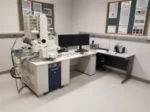How CTEM, AI, and access control redefine OT security in 2026
By Carlos Buenano, Field CTO for OT, Armis As we step into 2026, AI-driven adversaries, supply chain fragility, and relentless digitisation are forcing Operational Technology (OT) security to mature into a force to be reckoned with. Here’s what 2026 looks like: AI-Powered adversaries demand autonomous defence AI is no longer an abstract threat vector; it’s an operational force multiplier that attackers are leveraging with frightening results. We’re witnessing adversaries use autonomous agents to probe networks, map exposed devices, and launch dynamic exploitation campaigns that run continuously. In 2026, those systems will act autonomously: isolating compromised segments, or enforcing multifactor re-authentication for operators under suspicious conditions. In OT, where minutes can mean millions, automation will be the only meaningful defence. CTEM becomes the operational centre of gravity A few years ago, “CTEM” was just another Gartner acronym. In 2026, it’s the organising principle for any serious OT security program. CTEM represents a shift from periodic vulnerability management to continuous, risk-based exposure assessment and management across hardware, firmware, network paths, and even supply-chain dependencies. But the key difference this year is context. We’re aligning exposures with what actually matters; the physical process, the human safety implications, and the potential operational impact. The cybersecurity landscape in 2026 is clearly set for a strong and necessary integration where vendors leverage the strengths of CTEM to directly inform actionable firewall enforcements, workflows, and reporting. This narrative is driven by the final “Mobilisation” step of the CTEM cycle, which demands that validated, confirmed high-priority exposures leads to an immediate, automated remediation. Specifically for firewalls, this means a CTEM platform will no longer just issue a general alert but will use its deep, risk-based context to trigger a Security Orchestration, Automation, and Response (SOAR) playbook that instantly pushes a micro-segmentation policy or a temporary block rule to […]










